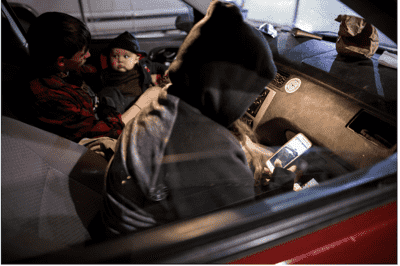

 Sitting in a car at the Nez Perce Reservation for IPhone access to the Internet 2018, The Fourth World Digital Divide: Internet access., Reservation Internet phone
Sitting in a car at the Nez Perce Reservation for IPhone access to the Internet 2018, The Fourth World Digital Divide: Internet access., Reservation Internet phone
In 2001 I wrote an article for the Social Development Review (July 2001, V5 N1) where the first paragraph began with this: “Fourth World nations (known also as “indigenous peoples,” “ethnic minorities,” “tribes,” “First Nations,” “natives,” “aboriginals,” “Indians,” “tribals,” “small peoples,” and “minority nationalities”) are a modern geopolitical reality yet they are consistently left outside the social, economic, political and cultural dialogues that affect all of human kind.” At the time I was mainly thinking about how in the international arena Fourth World nations were essentially invisible to the world and left out of the global dialogue.
That separation of the Fourth World from the rest of the world is even more pronounced now than it was seventeen years ago. What increasingly appears clear to me now is that there is a growing split between Indigenous peoples employed by their governments or associations who have access to the internet on a regular basis and the people they serve who generally do not have access to the internet. This is further complicated by the fact that Fourth World peoples have very little access to the Internet while the rest of the World is streaming concerts, plays and Netflix.
In the United States 24 million people in the general population do not have broadband Internet (25MBs or higher is required to actually benefit from the Internet). Among American Indians living on and near reservations an estimated 83% of tribal members do not have access to broadband Internet in their homes. Among 1.3 billion Fourth World peoples around the world the proportion of people without home access to broadband is even greater. Thirty years after the American government originated the Internet millions of Americans and the vast majority of the “on and near Indian Reservation” indigenous peoples do not have access to the minimum bandwidth to access the Internet or if they have 3MBs or 9MBs bandwidth they cant’ even access the more sophisticated websites that load over several minutes.

Sitting in a car at the Nez Perce Reservation for iPhone access to the Internet 2018
If Fourth World peoples in the United States have access to minimal levels of broadband at 3MBs and generally less than 25MBS they are unable to access information that can benefit their families and communities. Indigenous peoples in other continents have even less access. This divide further impoverishes Fourth World peoples not only in the United States; but also for those peoples in Africa, Asia, Mexico and South America and Europe as well. “Information impoverishment” creates a world where only those people with access to 25MBs or 100MBs and higher have access to information that can affect their ability to be informed about the decisions others are making that affect them.
While the United Nations waits for the next three years to decide whether indigenous nations’ representatives can participate in international decisions that affect them (as required under the UN Declaration on the Rights of Indigenous Peoples and confirmed in the 2014 UN World Conference on Indigenous Peoples), indigenous peoples can’t actually gain access to their friends and family over the internet much less information about the UN and its decisions.
Fourth World nations are supposed to be able to give their consent to decisions affecting them by states, organizations and businesses on the basis of freely acquired information received prior to their giving their consent. The Internet is now very much a part of the global and local decision making process. But getting the information to make effective decisions is essentially unreachable for most Fourth World nations.
Many Fourth World governments now have some or a great deal of access to the Internet that aids in their decision-making, but the people they represent do not have Internet in their homes. Some have to use an iPhone to access a low level source of Internet outside of the tribal government, or the school or the library sitting in their car or on the ground. How will they become informed to make effective decisions about their own communities if their government’s have information they themselves cannot access on the Internet? This is symptomatic of an “internal Fourth World divide” where some people have access to information and most do not. Add the internal “Fourth World Divide “to the “Fourth World and the Rest of the World Divide” and you have a formula for exclusion for 1.3 billion people in the world from information and the power to make their own decisions on matters affecting their lives. This is a formula for internal confusion and conflict; and it is a formula for pushing indigenous peoples into the shadows to avoid hearing their voices and taking advantage of them.
The library is dedicated to the memory of Secwepemc Chief George Manuel (1921-1989), to the nations of the Fourth World and to the elders and generations to come.
access here